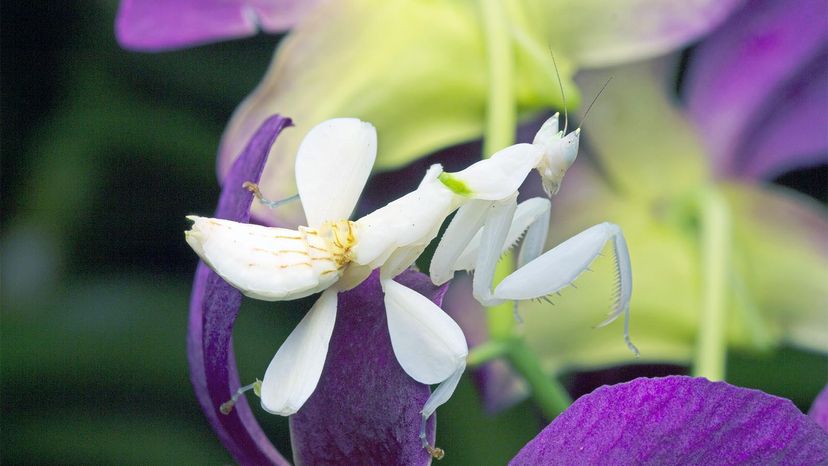Introduction: The orchid praying mantis looks like a flower, as powerful as a bee, and cannot be fooled by its appearance

For decades, scientists have believed that the orchid praying mantis mimics the orchid as a form of camouflage to protect itself from prey. This is not the case.
Sometimes science is really cool. Take hypotheses as an example. This is an explanation of the observed phenomenon. But to be proven, hypotheses must be tested, and sometimes a lot of information needs to be collected to complete the verification, but there are also some things that cannot be explained by science.
That's what happens to the elusive insect orchid mantis, which has tricks that scientists don't know.
What is an orchid praying mantis?
Orchid praying mantis, which lives in the tropical rainforests of Southeast Asia. Females are large, 2.3 to 2.7 inches (6 to 7 centimeters) long, while males are only 0.7 to 1.1 inches (2 to 3 centimeters) long.
Since being discovered more than 100 years ago, it is thought that these flower mantises evolved into beautiful pink and white and wide, flattened legs to mimic orchids and confuse prey. They then secretly attack insects such as moths, butterflies, beetles, and even frogs and scorpions. This type of evolution is known as mystical imitation or mystical coloring and can be used for defensive or offensive purposes. Other insects, such as leafy borers, do the same.
That makes sense, right? This was the idea of scientists, until a few years ago, when a group of researchers decided to test this hypothesis.
Scientists conducted systematic field tests to understand how adult female orchid mantises work. It turns out that they don't use camouflage at all. In fact, the orchid praying mantis attracts insects more than any flower. The insects flew straight at them without disguising themselves.
If it is not a mysterious imitation, why did the praying mantis evolve in this way?
The orchid mantis is the first known insect to mimic an entire flower, not just a part of it.
Why do they look like orchids?
Female praying mantises have evolved larger and more varied, increasing their chances of attracting their favorite prey. This is called aggressive imitation. They don't look like a flower. Studies have shown that their color evolved to mimic several flowers.
James, an evolutionary biologist of insects, explains to us from an insect's point of view that the distant colors indicate that its brain "has delicious nectar here." As the insect approached the orchid praying mantis, the petal-like legs confirmed what the insect thought was really like — it was a flower. Insects don't have brains as developed as we do, they have a short lifespan, and they don't have the ability to think critically. So naturally, insects are trapped, eaten, and the cycle of life continues, at least for the orchid mantis.
Why is this so cool for scientists?
First, this is the first time in a species that females have adapted for predatory purposes, not for reproductive purposes. Males and females evolve differently. Usually, these adaptations are for reproductive purposes.
In the case of adult female orchid mantises, they adapt because they are hungry, not to improve their chances of having children. Their males are smaller in size and camouflage to avoid being eaten, increasing the chances of reproduction.
Second, this type of study highlights how systematic field studies can help reveal patterns of evolution that we haven't noticed before. Dr. Svensson's research did not specifically study the evolution of the orchid mantis. But after he and his team noticed patterns in their data, they began to think that there might be more stories, and for scientists like Svensson, such discoveries were the "holy grail" of systematic research.
Finally, the orchid praying mantis is the first known animal to mimic the whole flower (color, petals, etc.), not just a part of it, to attract insects on its own.
Again, animals prove that we can't always predict why they will do what they do or see what they will look like.
Note Miki Zoological Hall